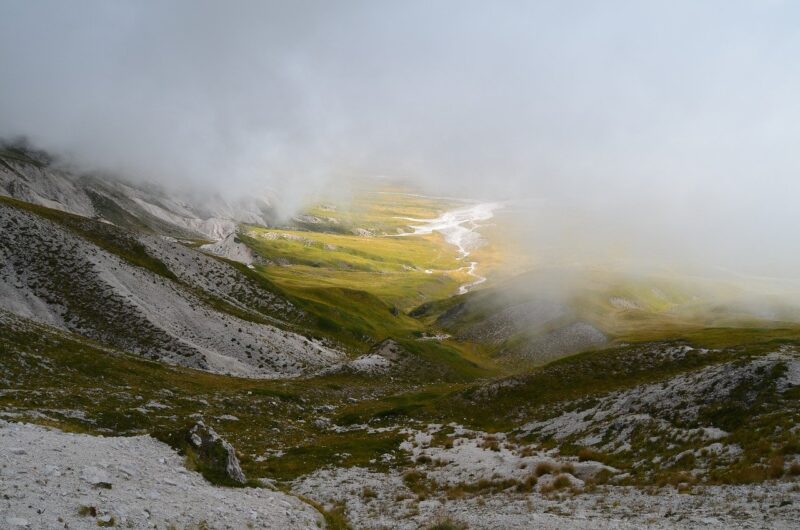Why the World’s Most Iconic Mountains Hold Cultural, Religious, and Historical Significance
November 17, 2024

Mountains have always captured the human imagination, standing tall against the horizon and commanding respect through their sheer magnitude. They are not merely geological formations; they hold deeper meanings that span cultural, religious, and historical narratives around the world. In this article, we will explore the significance of some of the most iconic mountains and how they have woven themselves into the fabric of various civilizations.
1. The Sacredness of Mountains: A Universal Theme
Throughout history, different cultures have ascribed sacredness to mountains, often elevating them as places of worship, spiritual journeys, or prophetic significance. They serve as symbols of strength, permanence, and endurance, qualities that many cultures revere.
– In Hinduism, the Himalayas are revered as the abode of gods. Mount Kailash, in particular, is held sacred, believed to be the home of Lord Shiva and a focal point of pilgrimage.
– In Buddhism, many mountains are sites for meditation and reflection, with Mount Meru, often depicted as the axis mundi, representing the center of the universe.
These spiritual beliefs encourage the exploration of humanity’s relationship with nature and the cosmos.
2. Mount Fuji: A National Symbol of Japan
Mount Fuji, standing at 3,776 meters, is not just Japan’s highest peak but also a national symbol. Its nearly perfect cone-shaped silhouette has inspired artists, poets, and travelers for centuries.
– **Cultural Representation:** The mountain represents Japan’s stunning beauty and is an integral part of traditional Japanese art. Iconic woodblock prints by artists like Hokusai capture its magnificence, establishing it as a cultural emblem.
– **Religious Significance:** Fuji is a spiritual site, where Shintoists believe that gods reside. The pilgrimage tradition to ascend the mountain has been preserved for centuries, acting as a rite of passage for many locals and tourists alike.
The intertwining of nature’s beauty and cultural significance at Mount Fuji makes it a profound symbol of Japanese identity.
3. The Andes: A Tapestry of Cultures
The Andes Mountains, stretching along the western edge of South America, hold significant historical importance for various Indigenous cultures such as the Inca Empire.
– **Economic and Spiritual Center:** Cities like Machu Picchu, located high in the Andes, served as crucial centers in Inca society, functioning as both economic hubs and sacred sites. They demonstrate the intricate relationship between mountain landscapes and human endeavors.
– **Cultural Festivals:** The Andes continue to be central to contemporary Indigenous cultures, hosting traditional festivals that celebrate the harvest, the earth, and the sacred relationship with nature.
The Andes illustrate how mountains can bridge the ancient with the modern, serving as living repositories of culture.
4. Mount Sinai: A Place of Revelation
Renowned as the place where Moses received the Ten Commandments, Mount Sinai holds immense religious significance in Judaism, Christianity, and Islam.
– **Biblical Events:** In the Judeo-Christian tradition, Sinai is documented as a pivotal location where divine laws were given. It represents a foundational moment in religious history where humanity’s covenant with God was solidified.
– **Pilgrimage Site:** Today, it remains a pilgrimage destination, attracting thousands seeking spiritual enlightenment and connection to their faith.
Mount Sinai epitomizes how a mountain can echo through time as a testament to faith and divine instruction.
5. The Rockies and American Identity
The Rocky Mountains in North America symbolize not just natural beauty but also a narrative of American identity and exploration.
– **Cultural Landscape:** Painters like Albert Bierstadt captured the grandeur of the Rockies, promoting a sense of national pride and a connection to the wilderness.
– **Historical Significance:** The mountains served as a pathway for westward expansion, a frontier for settlers embarking on voyages in search of new opportunities. Their lofty peaks symbolize adventure, resilience, and the American spirit of exploration.
The Rockies play a crucial role in shaping the American ethos, representing both natural wonder and the pioneering spirit.
6. The Matterhorn: Icon of Alpine Adventure
Characterized by its distinctive pyramid shape, the Matterhorn is one of the most photographed mountains globally.
– **Tourism and Climbing:** The Matterhorn draws adventure seekers and mountaineers alike, highlighting the growing cultural fascination with mountain climbing as recreation and sport.
– **Cultural Symbolism:** It is an emblematic representation of the Swiss Alps, embodying both the natural beauty of the region and its cultural heritage, blending nature with the human pursuit of adventure.
The Matterhorn shows how mountains can influence local economies through tourism while also representing the spirit of adventure and human achievement.
7. Conclusion: Mountains as Living Monuments
Mountains hold tales of civilizations, serve as places of worship, and represent the struggle between nature and humanity. As iconic landmarks, they embody a sense of place, identity, and continuity through time.
Understanding the significance of these formations allows us to appreciate not only their physical beauty but also their rich tapestry of cultural, religious, and historical narratives that continue to shape human experiences today.
Mountains are more than just physical entities; they are living monuments that reflect our own journeys, beliefs, and aspirations, reminding us of our connection to the Earth and to each other.








